Phu Yen has what it takes to transform into the next thriving tourism hotspot
Phu Yen Department of Culture, Sports, and Culture last week reported that despite difficulties, the province in the first half of this year attracted more than 1.52 million tourist arrivals, reaching 63.3 per cent of the initial plan, including over 9,100 international tourist arrivals, which is 3.8 times higher than the same period last year.
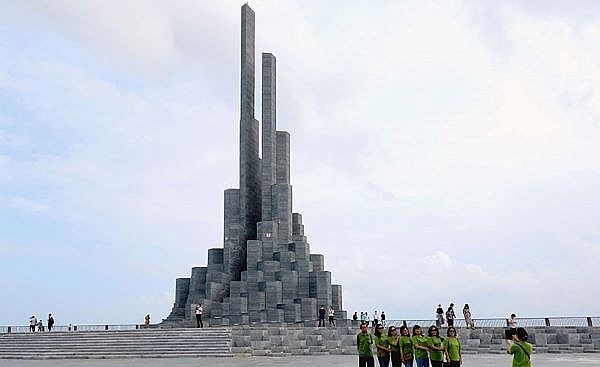 |
| Nghinh Phong Tower at Nghinh Phong Square, Tuy Hoa City, a new attraction for tourists when coming to Phu Yen (photo: Baodautu) |
“Phu Yen’s tourism industry is bouncing back. We are trying to turn it into one of the key drivers of the province’s economic growth in the coming time,” said Nguyen Thi Hong Thai, director of the department. “To this end, we will lay a big focus on diversifying tourism products with more promotion programmes.”
Phu Yen has been favoured with cultural heritages, a 190km-long coastline, and attractive landscapes including the swamps of Cu Mong and O Loan, and Vung Ro Bay. Besides that, the province has hot mineral water sources, which offer new advantages for the development of medical tourism.
Dr. Tran Dinh Thien, former director of the Vietnam Institute of Economics, said that Phu Yen is considered as a land with great potential for tourism development.
“To awaken such potential, it is important for the province to develop urban areas and tourism real estate, especially to allure investment and large corporations, leading tourism to become the thriving industry,” Thien said.
According to him, Phu Yen needs stronger support from the central government to untie the knots, involve in transport infrastructure, airports, construction and urban tourism development.
“Phu Yen needs to build a tourist city. Tuy Hoa urban area is just an administrative city, and there is no development of a commercial and tourist town. For example, visitors come to Phu Yen, and they just spend time on a few activities in Tuy Hoa but there is a lack of entertainment services for them,” said Thien.
Dr. Nguyen Quoc Hung, former deputy director of the General Department of Tourism, added that ecotourism, agriculture, rural, community-based tourism, and cultural tourism products could be a strength for Phu Yen.
“The tourism industry needs to orient which tourist market is suitable so that there is an investment strategy to promote as well as form appropriate tourism products,” Hung said.
At a business dialogue conference organised late last month, how to make Phu Yen tourism develop properly with its potential advantages was discussed. Secretary of the provincial Party Committee Pham Dai Duong declared that to develop Phu Yen’s tourism, it is necessary to have good human resources first, and then choose a good development model for replication.
“Tourism wants to compete and it must be professional. It must compete on difference and on quality, not only on price,” stressed Duong. “The central regions all have similar development conditions, the problem is that there must be a difference and tourists need that difference.”
Phu Yen should take resources and attractions including Xuan Dai Bay and Mui Dien - one of the most iconic sites of the city - to help make it stand up, Duong added.
Currently, some tourists, including Hanoi resident Nguyen Vinh Trung, believes that Phu Yen is “beautiful but boring”.
“The quiet space can be suitable for relaxation, but lacks ancillary products to meet the service needs. A family going on holiday requires quiet space for adults to relax, and satisfying space for the younger generation, which Phu Yen is lacking.’’ Trung insisted. “A city like Tuy Hoa, which is as empty as a village at 9pm, will never bring good inspiration to tourists.”
Province leaders acknowledge that the likes of the central city of Danang are bustling with many programmes to stimulate tourism, from the International Fireworks Festival to the Vietnam-Japan Cultural Festival, along with food streets at night and other seasonal specialities, and these are possibilities that Phu Yen can replicate.
Phu Yen is facing a great development opportunity based on infrastructure such as Deo Ca, Cu Mong tunnel, the North-South Expressway, and Tuy Hoa airport. These projects are now under construction, with some expected to be completed next year. It also boasts Nhan mountain, Xuan Dai Bay, Ganh Da Dia, and Mui Dien, which can become important launchpads to bring Phu Yen a tourism breakthrough.
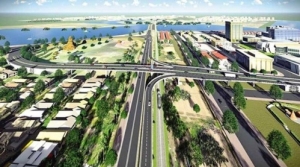 | Phu Yen lures many investors to industrial and economic zones According to Phu Yen People's Committee, thus far South Phu Yen Economic Zone (EZ) has attracted 53 investment projects covering 293 hectares and $218.2 million in total registered capital. |
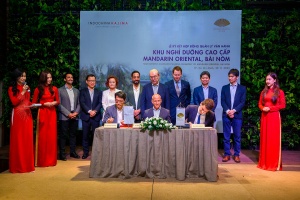 | Indochina Kajima inks agreement for luxury resort in Phu Yen On November 29, Indochina Kajima Development Ltd. – a joint venture between Indochina Capital (a leading real estate developer in Vietnam) and Kajima Corporation (one of Japan’s largest general contractors and overseas real estate developers) – held the signing ceremony for its hotel management agreement with Mandarin Oriental Hotel Group for Mandarin Oriental, Bai Nom, an ultra-luxury resort located in the central province of Phu Yen. |
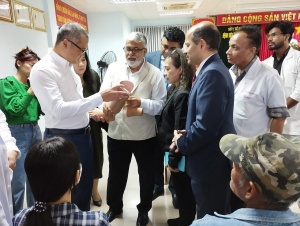 | Artificial limb camp set up in Phu Yen A Jaipur Foot Artificial Limb Fitting Camp was inaugurated on December 6 in Phu Yen province, assisted by the Indian government. |
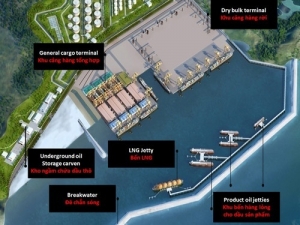 | Hoa Phat and Petmal Oil to pour $10 billion into Phu Yen The domestic steelmaker Hoa Phat Group and Petmal Oil Holdings from Malaysia have plans to pour VND230 trillion ($10 billion) into Phu Yen province |
What the stars mean:
★ Poor ★ ★ Promising ★★★ Good ★★★★ Very good ★★★★★ Exceptional
Related Contents
Latest News
More News
- The destinations powering Vietnam’s festive season travel demand (December 04, 2025 | 18:33)
- Vietnam named among the world’s most exciting winter destinations (December 04, 2025 | 15:10)
- Phu Tho emerges as northern Vietnam’s new tourism hub (December 01, 2025 | 17:00)
- Vietjet completes Airbus A320/A321 updates ahead of deadline (December 01, 2025 | 09:49)
- Vietjet resumes Con Dao flights from early December (November 28, 2025 | 15:24)
- Free tickets, Lunar New Year promotions on offer at Vietjet Mega Livestream (November 26, 2025 | 15:32)
- Scandinavian Airlines and Vietnam Airlines broaden agreement with new routes (November 25, 2025 | 17:04)
- Halong Cruise Port welcomes over 3,100 international visitors (November 12, 2025 | 18:06)
- Vietnam.travel climbs to second place in Southeast Asia website rankings (November 12, 2025 | 18:01)
- Cat Ba named among Southeast Asia’s top island adventures (November 11, 2025 | 18:09)

 Tag:
Tag:


















 Mobile Version
Mobile Version